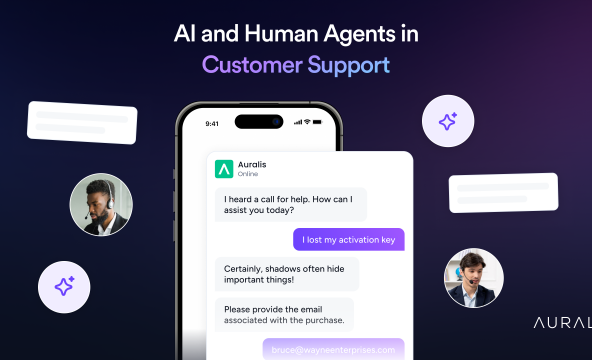Human-agent AI balance
The human-agent AI balance in customer service refers to the optimal integration of artificial intelligence (AI) and human agents to create a seamless and efficient customer support experience. As AI technologies, like chatbots and virtual assistants, become more sophisticated, they are increasingly taking on routine tasks, automating responses to common queries, and streamlining workflows. However, while AI excels in handling repetitive and data-driven tasks, human agents still play a vital role in addressing complex, nuanced, or emotional customer issues. Striking the right balance between AI and human involvement is essential to providing customers with quick, accurate responses without sacrificing the personalized, empathetic touch that human agents offer.
AI’s primary strength lies in its ability to automate time-consuming tasks such as answering frequently asked questions, providing order updates, and processing simple transactions. This not only reduces response times but also frees up human agents to focus on higher-value interactions. For example, AI can handle the initial stages of a customer inquiry, gather relevant information, and even suggest solutions, before transferring the customer to a human agent for more complex issues that require empathy, creative problem-solving, or deep product knowledge.
The human-agent AI balance is also crucial for ensuring that automation does not lead to frustration. Customers often prefer interacting with a human agent when they have sensitive concerns or feel that their issue requires personal attention. On the other hand, when routine tasks are automated, customers benefit from faster responses and resolutions, which helps maintain efficiency and satisfaction. This balance also means that when AI systems fall short—due to lack of understanding, complex scenarios, or emotional customer concerns—the transition to a human agent should be seamless, with all relevant context passed along. This helps avoid unnecessary repetition and reduces customer frustration.
Another important aspect is the ability of AI to support human agents in real-time. AI-powered tools can assist agents by providing relevant knowledge, suggesting responses, and even analyzing customer sentiment, enabling agents to respond more effectively. Human agents, with their empathy and problem-solving skills, can take over when needed, ensuring the customer feels heard and valued. This collaboration between AI and human agents improves overall service quality and reduces operational costs, without compromising the customer experience.
In summary, the human-agent AI balance is about combining the strengths of both AI and human capabilities to optimize customer support. AI can handle high-volume, repetitive tasks efficiently, while human agents bring empathy, complex problem-solving, and adaptability. By ensuring that automation enhances the customer experience and seamlessly escalates to human agents when necessary, businesses can deliver faster, more efficient, and personalized customer service.

- Articles
-
 Amy
Amy
- 8 min read